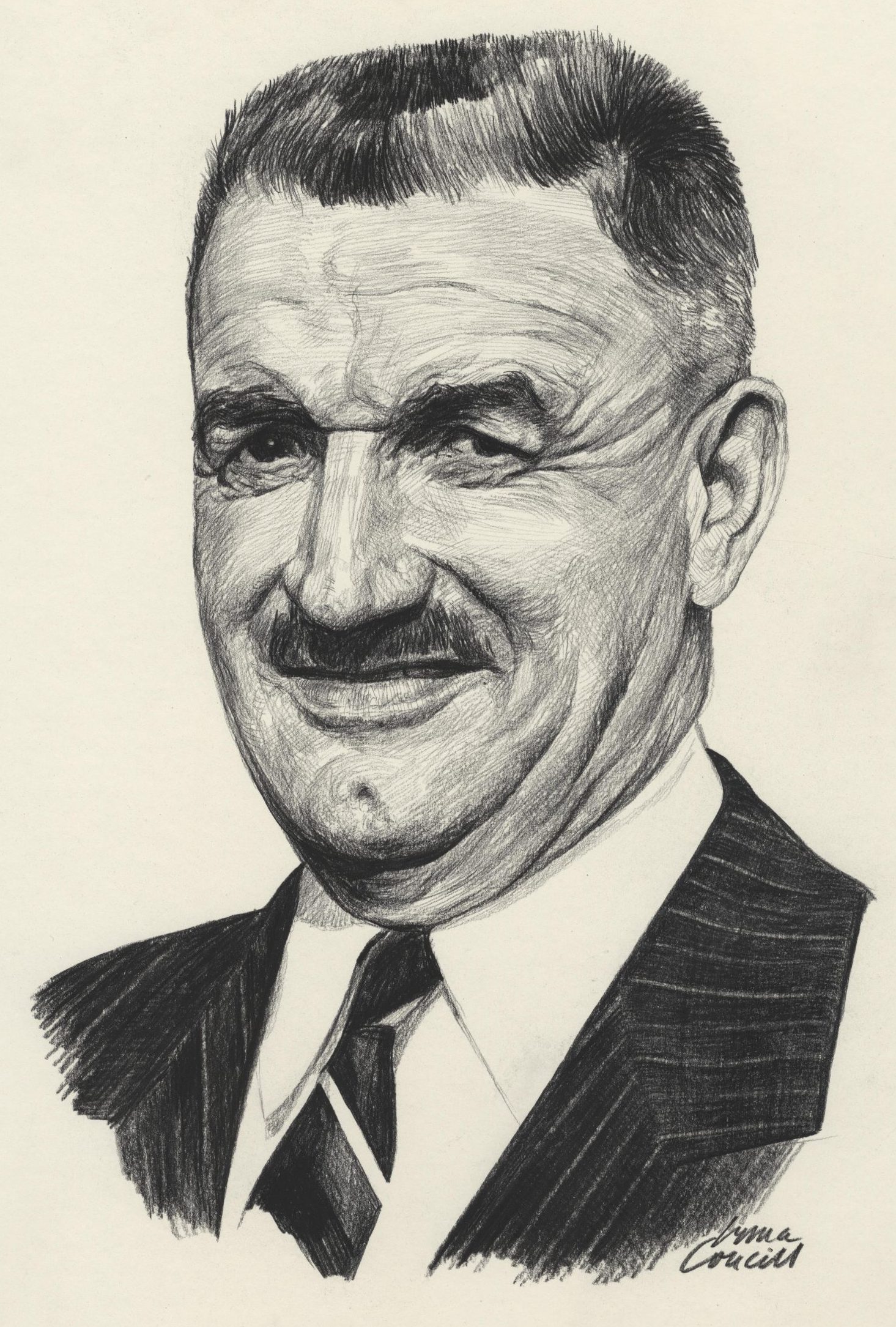Thomas Mayne Reid

Nickname: Pat
Birth Date: August 22, 1895
Birthplace: Ballyroney, County Down, Northern Ireland
Death Date: April 8, 1954
Year Inducted: 1974
Awards: DFM; The McKee Trophy*
His mapping of this nation's northern frontier during pioneer air expeditions, and the dedication of his skills to seeking lost airmen, have been of outstanding benefit to Canadian aviation
Heroism Under Fire
Thomas Mayne (Pat) Reid, D.F.M., was born in Ballyroney, County Down, Northern Ireland, on August 22, 1895, where he was educated. As a youth he served a term as mechanic's apprentice with the Ferguson Automotive Company at Belfast. In 1915 he enlisted in the Royal Naval Air Service in England as an air engineer. He was posted to Dunkirk, France, in 1917, as a crew member on twin-engine flying boats with the Royal Flying Corps (RFC) on anti-submarine duties. On one sortie he repaired their damaged flying boat after a forced landing in the North Sea caused by gunfire from a surfaced German submarine. They took off again in the repaired aircraft and returned to sink that submarine. In 1918 Reid was awarded the Distinguished Flying Medal (D.F.M.) for heroism under fire.
A Pilot in Canada
In 1919 Reid was employed by the Handley-Page Transport Company in various capacities and in 1924 became Manager of their operations in Switzerland. Later that year he immigrated to Canada and joined the Ontario Provincial Air Service as an air observer based in Sudbury, Ontario. After two years on forestry patrol duties, he attended the Ontario Air Service school of instruction, followed by a course at Camp Borden, Ontario. He graduated in 1926 with a Commercial Pilot's Licence.
Flying in the North
After another year with the OPAS, flying de Havilland Moths and Curtiss HS-2L flying boats from northwestern Ontario bases, Reid was hired by H.A. 'Doc' Oaks, to carry out remote explorations for the Northern Aerial Mineral Exploration (N.A.M.E.) Company. In the spring of 1928, in company with two other pilots, including Matt Berry, in separate aircraft, he flew a prospecting party from Winnipeg, Manitoba, north through Fort Churchill, to Baker Lake, where they left the prospectors. He continued his exploration flight to Coppermine on the Arctic Ocean, then followed the Mackenzie River to Edmonton, Alberta. The expedition ended in Winnipeg six months after it began and crossed 25,000 miles (40,232 km) of wilderness, without the benefit of navigational aids or weather services. They provided early Canadian map makers with some of their earliest knowledge of the uncharted northland.
Mercy Flights
One of the numerous mercy flights he undertook was with Oaks in January 1929, when they flew 1,600 miles (2,575 km) along the eastern sub-Arctic coast of Hudson Bay through inclement weather to locate a party of 13 stranded prospectors and return them to their base. In the fall of 1929 Reid played a leading role in the search for the MacAlpine party which was missing in the Arctic. One of his responsibilities was to fly material and supplies for the use of the large search party.
Rescue Mission
Reid joined a search mission as Chief Pilot during the winter of 1929-30 to locate the famed American pilot Carl Eielson, lost with a companion in an aircraft off the coast of Siberia, where he was flying relief supplies to a stranded schooner. The Aviation Corporation of Delaware hired Reid to lead a three-plane expedition from a base of operations at Fairbanks, Alaska. Enroute from there to Nome, he himself was forced down in a blizzard in a mountain pass and severely damaged a wing. He and his air mechanic waited out the storm for a week, repaired the aircraft and proceeded to their destination. From Nome he made a number of flights across the Bering Strait and along the coast of the Chukchi Sea. Some 450 miles (724 km) from base, and 200 miles (322 km) north of the Arctic Circle, he located the wrecked aircraft and subsequently flew the bodies of the two airmen back to Alaska.
Two-Way Transcontinental Flight
In 1931 Reid became Western Aviation Manager of Imperial Oil Limited and that summer he flew the Company's Puss Moth, CF-IOL, as leader of the Trans-Canada Air Pageant. The tour was a two-way transcontinental flight, visiting every city in Canada where landing was practical. It was a showcase for the fledgling Canadian aviation industry and displayed the latest in civil and military aircraft. The following year he was named Aviation Representative of Imperial Oil, with headquarters in Toronto, Ontario.
Awards and Recognition
Reid was awarded the Trans-Canada (McKee) Trophy for 1942 for his efforts in the advancement of flying in Canada, and his logistical organization of aviation fuel supplies for the war effort needs of the British Commonwealth Air Training Plan (BCATP) and Ferry Command. The McKee Trophy was awarded to him again in 1943, and he became the first person to receive this honour twice. Reid and his wife were killed in the TCA crash at Moose Jaw, Saskatchewan, on April 8,1954.
"Pat" Reid and "Phil" Garratt have the distinction of being the only two people to be honoured with the Trans-Canada McKee Trophy twice, Reid for the years 1942 and 1943 and Garratt for the years 1951 and 1966.
Thomas Mayne (Pat) Reid was inducted as a Member of Canada's Aviation Hall of Fame in 1974 at a ceremony held in Edmonton, Alberta.
To return to the Inductee Page, please click here.
